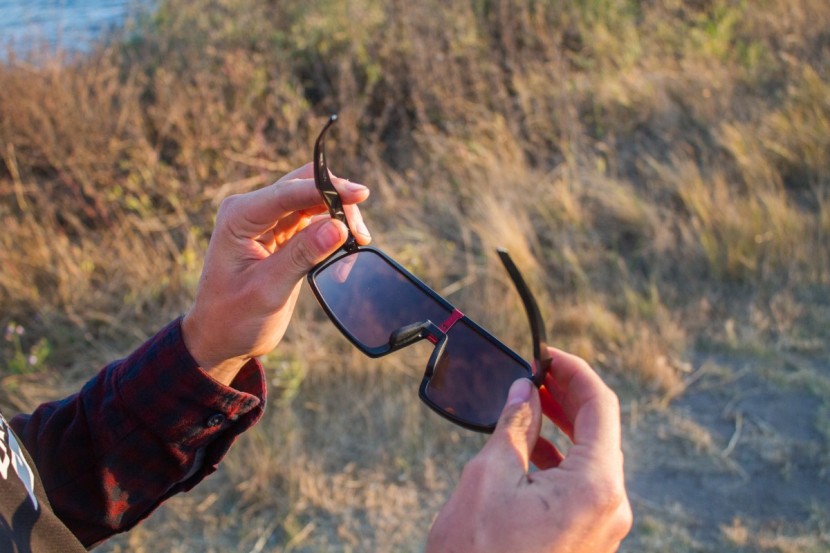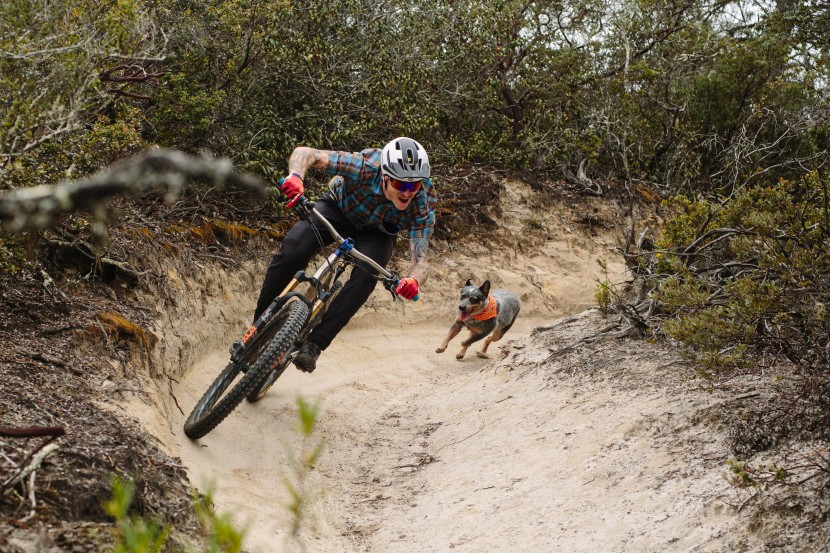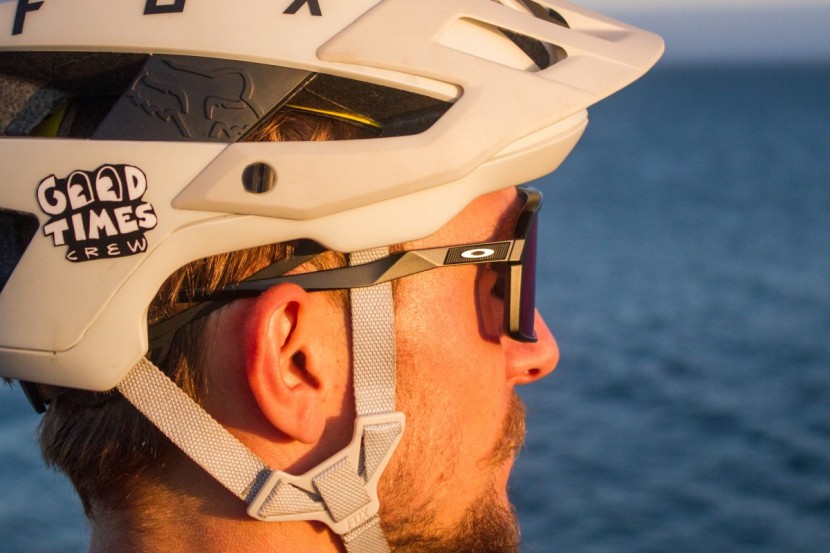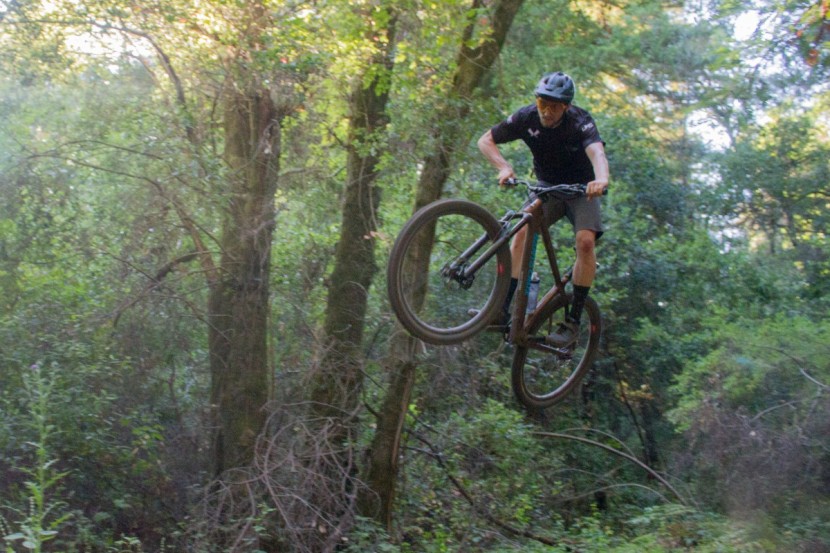These days, the cycling sunglasses market is saturated with countless models, each claiming to be the best. It's daunting to try and sift through the mire and come up with a list of truly quality sunglasses, so we decided to put in the work and answer the question for you. After loads of research to narrow the list down, we tested 15 of today's best models and rated them on five key metrics to provide a clear picture of the top performers. You can just read on to learn exactly how we did it.
Lens Quality
A quality lens is key to a good pair of cycling sunglasses. After all, what are sunglasses for other than to protect your eyes and help you see in various light conditions? Foremost, we evaluated each pair's lens based on the protection it affords your eyes from harmful light. The best lenses can protect from UV rays and HEV light; some even protect from infrared transmission. Additionally, polarized lenses help protect the eyes from horizontal light waves that can wear out and damage your eyes over time.
Since these glasses were all designed for performance in high-speed sports, we also paid close attention to the quality of their optics. We tested each model in various light conditions and activities to seek out distortion or imperfection in the lenses and assess their ability to improve contrast and definition. We rated each lens's versatility by defining the light conditions it could viably perform based on its visible light transmission percentage and our experience in the field. We also noted whether the lenses included things like anti-scratch or hydrophobic lens treatments to measure their durability alongside our experiences in testing.
Fit and Comfort
Along with lens quality, the fit and comfort of a cycling sunglass model are critical to the user experience. Nobody wants a pair of glasses with fantastic lens quality if it gives them a headache after five minutes. To properly assess each model's fit and comfort, we first reviewed their frames to check for flexibility and adjustability. If a frame is too stiff, the arms won't easily flex to accommodate larger head sizes. Likewise, if the nose piece doesn't offer any adjustability, it might be a tough fit for someone with a narrow nose. Frame material also played a role in our assessment here. Some models feature hard plastic frames that can feel uncomfortable on the face no matter how good the fit is, while others have soft, flexible material that's easy on the contact points.
Beyond analyzing the frames and checking our fit, we recruited friends and family to get these glasses on as many faces as possible. We had all of our in-house testers try them to sample a wide variety of face structures and head sizes, and we asked each of them to provide us with their thoughts about the fit, adjustability, and long-term comfort of each model. Many of us walked around the office in cycling shades for weeks.
Coverage
Like helmets and sunscreen, sunglasses are only effective where you have coverage. Cycling sunglasses today have better coverage than ever. In recent years, athletes have favored larger lenses, affecting the coverage and protection of the average pair of sunglasses. A model's coverage is largely based on the size of its lens, so one of the first things we do is compare the lens size and the frame's frontal area. We measure the lens size of each model and use our measurements to compare the overall area of coverage.
Lens size alone doesn't equate to coverage and protection, however. We also paid close attention to how the glasses fit on the face, how far the lenses wrapped around the sides of your face, and how many air vents or scoops the frames had. These things can make a huge difference in the feel of a model's coverage when flying down a high-speed descent. Some of the top coverage performers in our test didn't have the largest lenses simply because a quality, close-to-the-face fit can provide fantastic wind protection. That said, larger models generally provide more protection from rock, bug, or branch impacts when flying down the trail.
Frame Quality
A quality frame is crucial to the longevity of your sunglasses. You don't want to spend a couple hundred dollars on a fancy pair of glasses and have the frame snap the first time you take a digger on the local group ride. Also, quality frames can provide adjustability of fit, comfort, grippy contact points, and easy lens swaps. We paid attention to each thing when deciding upon our ratings for this metric.
To assess each frame's material quality, we researched material properties and some good old-fashioned bending, flexing, and twisting to test for brittleness. Some of the frames we tested are made from high-quality shatterproof thermoplastics, and others are made from materials meant to look and act like high-quality shatterproof thermoplastics, so we had to be super thorough in our analysis. We swapped lenses countless times to ensure frames held up to repeated flexing.
Field Performance
On top of our other metrics, we wanted to assess how each model fared on the trails and roads. If a model boasts a superb lens and quality frame construction but fogs up as soon as you start moving, it's useless. We based our ratings in this metric on each model's ability to avoid lens fogging, channel sweat away from the lenses and eyes, stick in place when you get sweaty, or things get rough, and allow you to stay focused on the trail when things get tricky. These things can ruin a ride or race if your glasses aren't cooperating, so we weighted this metric slightly more heavily than the rest.
To test the glasses for this metric, we used them a whole lot. We tested each model in a variety of weather conditions and light conditions while doing various activities, including mountain biking, road cycling, gravel riding, trail running, hiking, and sipping coffee in hipster cafes. We even used these glasses for lounge time at the beach and work in the yard. By the end of testing, we had a solid picture of how each model performed in various conditions and felt confident giving our recommendation.





